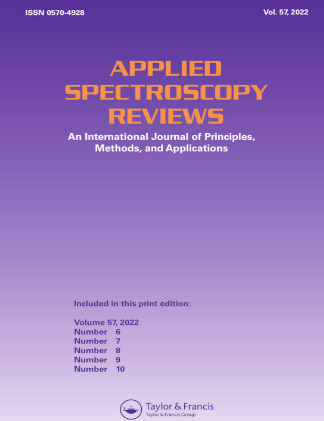Hyperspectral microscopy- applications of hyperspectral imaging techniques in different fields of science: a review of recent advances
IF 5.4
2区 化学
Q1 INSTRUMENTS & INSTRUMENTATION
引用次数: 0
Abstract
AbstractHyperspectral imaging is a powerful analytical technique that is drawing more attention among the different disciplines due to its feasibility for in situ applications on imaging of living organisms. In this review article, we summarize the development and implementation of this technique in the different fields of science. It is important to acknowledge that the hyperspectral microscope, a specialized imaging tool, combines the power of microscopy with the ability to capture detailed spectral information about the sample studied. Unlike traditional microscopes, which only capture spatial information about a sample, hyperspectral microscopes also capture spectral data from each spatial point, resulting in a 3D data cube. The latest applications have been studied and described, including examples from the environmental and medical field. The broad possibilities related to hyperspectral microscopy were discussed and highlighted showing successful results. Hyperspectral microscopy is a revolutionary and reliable technique in the world of characterizing analytical tools.Keywords: Hyperspectral imagingenhanced dark-field hyperspectral microscopynondestructive techniquedarkfield hyperspectral microscopynanoparticles AcknowledgmentThe authors acknowledge Dr. Jose A. Hernandez-Viezcas for sharing his knowledge in hyperspectral microscopy. Dr. Kenneth Flores and Loren Ochoa for their assistance and support during this article’s preparation and insight. J.L.G.-T acknowledges partial funding provided by the National Science Foundation (NSF) Engineering Research Center (ERC) on Nanotechnology-Enabled Water Treatment (EEC- 1449500). J.L.G.-T also acknowledges the Dudley family for the Endowed Research Professorship and the University of Texas systems’ 2018 STARs Retention Award.Disclosure statementNo potential conflict of interest was reported by the author(s).高光谱显微镜-高光谱成像技术在不同科学领域的应用:最新进展综述
摘要光谱成像是一种强大的分析技术,由于其在生物原位成像方面的可行性而越来越受到不同学科的关注。在这篇综述文章中,我们总结了该技术在不同科学领域的发展和实施。重要的是要认识到,高光谱显微镜,一种专门的成像工具,结合了显微镜的力量和捕获所研究样品的详细光谱信息的能力。与传统显微镜只捕获样本的空间信息不同,高光谱显微镜还捕获每个空间点的光谱数据,从而形成一个3D数据立方体。对最新的应用进行了研究和描述,包括来自环境和医疗领域的例子。讨论并强调了与高光谱显微镜有关的广泛可能性,并显示了成功的结果。高光谱显微镜是一种革命性的、可靠的表征分析工具。关键词:高光谱成像增强暗场高光谱显微镜无损技术暗场高光谱显微镜纳米颗粒作者感谢Jose A. Hernandez-Viezcas博士分享了他在高光谱显微镜方面的知识。感谢Kenneth Flores博士和Loren Ochoa博士在撰写本文的过程中提供的帮助和支持。j.l.g.t承认由美国国家科学基金会(NSF)工程研究中心(ERC)提供的纳米技术支持水处理(EEC- 1449500)的部分资金。J.L.G.-T还向达德利家族授予了捐赠研究教授职位和德克萨斯大学系统2018年明星保留奖。披露声明作者未报告潜在的利益冲突。
本文章由计算机程序翻译,如有差异,请以英文原文为准。
求助全文
约1分钟内获得全文
求助全文
来源期刊

Applied Spectroscopy Reviews
工程技术-光谱学
CiteScore
13.80
自引率
1.60%
发文量
23
审稿时长
1 months
期刊介绍:
Applied Spectroscopy Reviews provides the latest information on the principles, methods, and applications of all the diverse branches of spectroscopy, from X-ray, infrared, Raman, atomic absorption, and ESR to microwave, mass, NQR, NMR, and ICP. This international, single-source journal presents discussions that relate physical concepts to chemical applications for chemists, physicists, and other scientists using spectroscopic techniques.
 求助内容:
求助内容: 应助结果提醒方式:
应助结果提醒方式:


